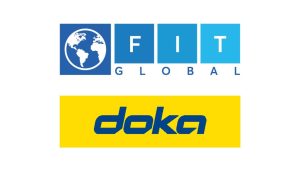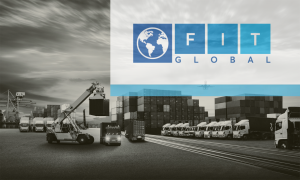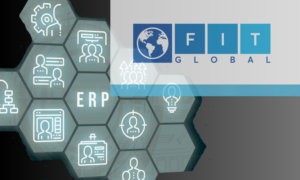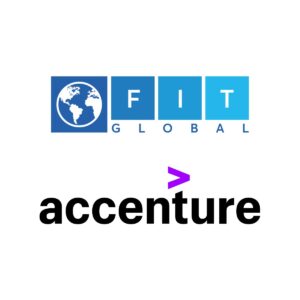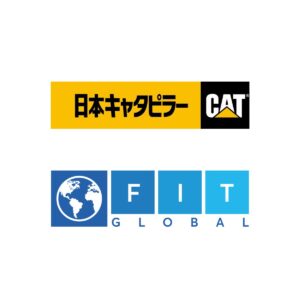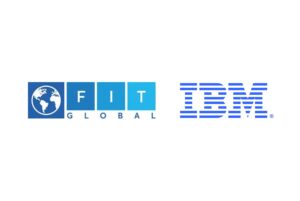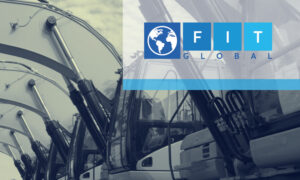During the last decade, the Equipment Global Rental Market showed continuous growth that reached its peak in 2021 with $93 billion in revenue, and it is expected to reach more than $105 billion by 2030.
Equipment Rental is a considerably large market for a reason. Dealerships are highly profitable businesses with big potential and demand. This big demand is due to the shift towards a ‘sharing economy’ with all the flexibility and benefits rent offers. Contractors obtain the needed equipment whenever they wish, with no long-term commitments. They can cut the cost of repairs, maintenance, and storage – things that are unavoidable when owning equipment.
Yes, dealerships are profitable, yet, they are high maintenance as well. It can be frustrating to manage a large number of assets, reduce risks and get the best potential out of them. In addition, the competition is intense with the existence of many rivals who can provide more appealing and beneficial offers. Furthermore, dealers need to continuously keep up with the latest technologies and trends, simply because: People are attracted to NOVELTY!
By nature, humans find satisfaction and accomplishment in discovering and trying the newest things, before anyone else. Whether it is the latest equipment model, the integration of new technology, or anything trendy, it impels everyone’s curiosity. Rental companies need to take this into account. Not only by continuously providing the newest equipment models but also by offering exceptional and personalized customer experience.
Since the rental market is continuously evolving, it is always bound to seize the latest technologies and trends out there. If you snooze you lose! Not only to stay ahead of the competition but also to manage their assets more efficiently.
In this article, we highlight some of the most important rental trends that dealers should keep up with, as well as their impact on business. You gain deeper insights into each trend and discover how it can be aligned with your business goals.
1. IoT & Predictive analysis - Industry 4.0
For any rental company, keeping track of their assets’ movements while they are in the rentee’s hands is important. IoT (Internet of Things) enables the connection of any object to the Internet and provides valuable data to take the right actions and measures. This provides endless potential for automation and digitalization. IoT can be used with sensors and cloud platforms and can come in various forms, such as GPS, RFID (Radio-frequency identification), and ultrasonic asset tracking sensors.
IoT has already proven its positive impacts on equipment-owning companies, as it gave them more visibility and control on hand. Yet, IoT’s potential is still on the rise. According to a report run by McKinsey, it is estimated that the economic impact of IoT applications could stretch from $3.9 trillion to $11.1 trillion per year in 2025.
For rental companies, it is essential to remotely keep an eye on the state and possible needs of their fleet. IoT gives them the opportunity to track, trace and assess their fleet and predict anything that can go wrong. They can see all their assets’ movements, stay assured that it is being used properly, and forecast the risk of theft or loss.
Now let’s dive deeper into one of the best advantages of IoT and see how they really facilitate renters’ life.
Starting with Preventive Maintenance, we will see how much it contributes to reducing costs and extending the equipment lifespan.
Similar to how the human lifespan gets extended thanks to medical advancement, the equipment lifecycle got extended thanks to technology and connectivity! Most importantly, IoT can help to extend the assets’ lifecycle and cut costs significantly, by enabling predictive maintenance and deep insights-based inventory management. The historical data gathered from IoT devices provides key metrics and data on equipment health, usage, and potential risks.
These metrics and data that are generated, can be used by rental companies to develop new reflexes to avoid specific failures and eliminate unused features. Random and sudden failure can cause significant losses and damage to equipment.
With IoT, rental companies can now predict when their fleet fails, arrange necessary fix or replacement activities in the regular maintenance schedule and thereby reduce downtime. Predictive maintenance not only reduces costs but also reduces safety risks by decreasing the probability of random failure and spotting inefficiencies early on.
According to the same McKinsey report, it is estimated that IoT has the potential to reduce maintenance costs by up to 40% and decrease equipment downtime by 50% (depending on the industry). All this is possible with the analysis of Big Data from IoT-enabled machines and fleets.
To have a better understanding of how important preventive maintenance is, here are some numbers that reflect its big impact on companies (according to a study done by PWC):
- Improve uptime by 9%
- Reduce costs by 12%
- Reduce safety, health, and environmental quality risks by 14%
- Extend the life of aging assets by 20 %
A second major opportunity of IoT is it’s significant impact on Inventory Tracking. It does not only help to reduce costs and time, but also enables an effective inventory management system and makes the best use of resources. Inventories can be managed smartly to eliminate costly and time-consuming errors by ensuring that inventory levels and equipment locations are 100% accurate and continiously monitored. As a result, rental companies can increase storage and delivery efficiency, and an automated service and parts ordering.
Over and beyond, a third driver is the ability to align the Pricing & Billing of Rental equipment with its usage through IoT data. Flexibility in pricing offers new business opportunities and aligns with customer needs. This leads to increased profitability and customer satisfaction.
Still, companies need to make proper use of IoT data with software that includes IoT connectivity and data analytics. Otherwise, IoT data is stored just because it exists. Without application and a business purpose, IoT data is a cost, not an asset.
2. Artificial Intelligence (AI) and Machine Learning
Nowadays, for any company or industry, the key to making the right decisions is turning data into actionable insights. Besides, automating as much as possible of manual processes can save time and resources for value-added and human-critical tasks. AI and machine learning will help to make informed strategic decisions in the briefest delays.
AI, as defined by John McCarthy, is “The science and engineering of making intelligent machines, especially intelligent computer programs”. Machine learning is a complementary technology to AI that allows software applications to automatically learn how to become more accurate at predicting outcomes by using historical data and algorithms as inputs, and recognizing patterns from data.
Machine learning and AI contribute to business performance and decision-making improvement. This is exactly what rental Companies need to embrace, as they belong to a constantly changing and unstable industry. The usage of these technologies would simplify most of their processes, provide valuable insights, review documents sharply, and predict demand.
With all the insights and predictions AI and ML offer, rental companies can become more flexible and able to adapt faster to any challenge or unforeseen event. This way, they can achieve greater efficiency, lower operating costs, greater customer satisfaction and save considerable financial losses.
Not to forget to mention that AI technology unleashes the full potential of IoT, by accurately analyzing the collected data and delivering meaningful insights. By utilizing AI-enabled IoT, rental companies can boost their operational efficiency, establish better risk management, avoid unnecessary and unplanned costs, extend their assets/equipment’s lifespan and offer a customized customer experience.
When it comes to inventory management, rental companies can make use of AI algorithms and data analysis to balance their stock levels and make informed and intelligent decisions. These insights can help inventory managers to correctly calculate the optimal stock levels to meet the demand, without over or understocking. This way inventory and operating costs can also be reduced.
Not only inventory levels will be solid, but stock availability will also be better synchronized with demand forecasting. On top of that, AI and ML can detect issues and defects preliminary to sending the equipment to the rentee, thus, preventing rental companies from sending faulty equipment to their client.
Customer behavior and needs often change. Does a customer want to buy or swap any rental equipment? Is there a need to re-rent equipment or offer an operator to handle the equipment? Or do they want to boost cross- and upsell with rental packages? How can AI help exactly?
Applying AI to customer relationship management (CRM) gives a better understanding of the customer’s preferences and behavior patterns. Moreover, AI can help get more accurate order tracking and delivery information. That would help rental companies automate relationship management, deliver better support, and adapt perfectly to their needs. AI enables an excellent customer experience and more personalized offers would in turn earn the Rentee’s loyalty and keep him satisfied.
AI x Preventive Maintenance and Asset Utilization
Predicting the fleet’s potential state and maintenance needs is also enabled by AI technologies, as it can process data from various sources and envision all possible future needs. Real-time fleet telematic data, vehicle data, periodical checks, data coming from connected sensors, and external factors data, are all taken into consideration to predict and plan maintenance, so the equipment wouldn’t malfunction during usage. Not to mention all the cost cuts that can be done thanks to all these predictive and preventive insights that identify malfunctions and downtimes before they occur.
By embracing a preventive maintenance system, the rental equipment’s lifecycle can also be significantly extended. Besides, AI-based technologies can provide long-term insights and predictions for vehicle depreciation, which contributes to optimizing fleet utilization and planning for the perfect timing to de-fleet, sell, replace, or swap. Therewith, equipment utilization, and efficiency are maximized when maintenance is synchronized with client and service demand.
Besides giving accurate insights on depreciation, AI tools analytics can also help in setting correct pricing management and rental rates. This way, not only pricing will be fair, but revenue forecasting would also be more accurate with enough reliable data on hand. Rental companies can assuredly track profits and expenses alongside, and calibrate all data in hand to take the right decisions.
The benefits of AI and ML is a broad topic and it is clear how these technologies can and will revolutionize the Equipment Rental industry. Evidently, rental companies can make great use of AI and ML technologies to avoid futile costs, stay a step ahead and automate most of their tasks. Likewise, they can upgrade their customer service by offering a personalized experience and running a seamless delivery. Still, there is a big learning curve ahead!
3. A Cloud-based Rental Solution
In order to survive and thrive in this digital age, rental companies have to catch up with the latest technologies out there. One of the revolutionary technologies that businesses hugely benefited from in the last decade, is the cloud. It has opened new possibilities for data management and offered more flexibility, security, and cost savings. But is the cloud that new? Not really, the Internet ‘cloud’ has been around since the 1960s, but the term ‘cloud computing’ was used for the first time by an executive in a Google conference back in 2006.
How does it work exactly?
Instead of local hard drives or private data centers, the cloud uses remote servers to store and access data. Cloud computing delivers servers, storage, databases, and networking, hosts software, and enables analytics, and intelligence through ‘the cloud’ (over the internet), unlocking a faster and more flexible use of resources.
Why Should Companies Switch to cloud computing?
With endless remote storage capabilities, the cloud makes it easier for companies since they don’t require active management to use it. This way, any cloud-using company discards buying, owning, and maintaining physical data centers and servers, pays only for services they use and need, and benefits from industry best practices, economies of scale, operational costs downsizing, as well as an efficient run and customization of their infrastructure.
Using cloud-based rental software and its benefits
As IT departments have a reputation for being one of the most financially draining, there is an increased need to move from CapEx (“Capital Expense”) to OpEx (“Operational Expense”) by embracing Cloud solutions. With a standardized cloud rental-specific solution, rental companies can respond swiftly and connect with their ecosystem of suppliers, manufacturers partners, and customers. Choosing a strong digital core of the rental industry takes you back into the driver’s seat and gives you more space and time for critical and human brain-dependent operations.
Traditionally, companies should invest in hardware to benefit from computing services. Both application and implementation of these are costly and timely. Furthermore, software integration is another burden faced by many companies. With the cloud, companies can still benefit from computing services while ditching their hardware investment for a cost-effective and time-wise cloud subscription-based model.
By using cloud–external servers and software licenses, companies can smoothly outsource their computing services. By doing so, they benefit from the expertise and added values of another company and reduce their ownership and resources costs such as HR and stock.
This new business model allows companies to issue reports easily and access real-time data via the internet using any device, wherever and whenever, with no specific IP. For example, rental companies who use a third-party rental solution to run their rental processes, get rid of unnecessary management stress and focus their resources on their core rental value proposition instead.
4. Asset Sustainability
Running a business comes with endless responsibilities. Not only towards the economy, stakeholders, employees, clients, and suppliers, but also towards the environment. In the common hope of a greener future, equipment manufacturers are adapting their innovation strategy to an environmental-friendly vision.
Companies are in a race of who would contribute more to environmental initiatives such as the Net Zero Emission by 2050 Scenario. That’s why we are seeing more companies spend time, money, and resources on ESG (Environment, Social, and Governance) initiatives, in order to be more socially and environmentally responsible and conscious.
For Rental companies, adding sustainability measures to the business operations equation, not only contributes to preserving the environment but also grants better usability and equipment lifecycle extension. Moreover, managing assets in a sustainability-oriented way drive better business outcomes and support the customer’s increasing demand and changing preferences.
Still, companies only struggle to make the right decisions to improve asset sustainability. Why? They lack the right asset insights or have a hard time bringing these together to draw the right conclusions – like executing preventative maintenance – and act swiftly according to the business needs. The right technology can fill this crucial information gap to ensure measurable progress around asset sustainability.
There are several ways you can implement a more sustainability-oriented approach in your equipment rental business:
Optimize operations – Break down your asset management processes and identify areas where you can improve. End-to-end equipment management software can transform the way you work. It gives you a good glimpse into your equipment state, down to its constituent parts. Asset assessment data, life cycle analytics, modeling, and real-time insights, are crucial to take the right decisions for optimal equipment use and decreasing its environmental footprint.
Evaluate operations with benchmarks – International certifications such as ISO 55000 show the world that your asset management standards are at the top level for performance, reliability, and of course, sustainability. Evaluate how you measure up to these standards and identify what you will have to do to achieve them.
Visualize operations with sustainability reporting – Buy-in from senior management is essential when you’re trying to make real and lasting changes. Ensure your equipment rental management software gives the C-suite the insight they need to see the effects of your sustainability initiatives. Make sure your rental software tool covers:
- CXO View
- CIO & CTO view
- Process Owner View
- Operations View
- Asset View
- This happens across entire value chains and from the cradle to the gate.
Adopting such a sustainability-oriented approach will enable your rental business to have a positive impact on the environment, employees, contractors, and finance. Here are some of the business cases of a Sustainable Rental Management approach:
Reduce CO2 Emissions of Assets – By being able to track & trace emissions of assets in real-time combined with the context of asset-specific business processes, you can drive decisions to reduce emissions based upon intelligent data.
Embrace Equipment & Predictive Maintenance – By combining real-time data from assets, like location, utilization, and service, with historical maintenance data, trigger maintenance activities before issues arise. This will extend the lifecycle of any asset and reduce related CO2 emissions while improving the efficiency of logistical movements.
Improve Asset Safety – By being able to send proactive alerts, due to the availability of real-time, contextual data from your assets, you can take safety actions in time. With embedded AI, operators could also check asset manuals and tutorials to ensure all safety measures are taken into account when using the assets.
Managing equipment in a sustainable way is no easy task. Making the right decision at the right time needs a reliable rental solution. A solution that provides real-time, contextual, enriched, and actionable data, covering the entire value chain and from the cradle to the gate.
5. Rental-Industry Specific Software:
Is choosing a rental solution that critical? The answer is Yes.
Gone are the days when rental businesses were run via spreadsheets with just a few team members. Looking back, it looks impossible that we used to run business that way, with today’s vast array of rental industry solutions. Luckily, the transition from those spreadsheets has never been this easy!
The rental management industry offers various Rental ERP solutions that promise efficiency, clarity, and insights to your business. But when your business is booming and you’re ready to invest in a comprehensive rental industry solution, how do you choose which one to go for? What are the non-negotiables of an outstanding rental management system?
We will go through six crucial factors to consider for rental companies looking to upgrade or renew their Rental ERP system. These include costs, requirements, comprehensiveness, reporting, developments, and support. A suitable rental solution needs to grant the following:
- Keep costs low and ROI high
The biggest consideration when implementing new equipment rental software in your business will always be the bottom line. Every little detail should be taken into account. From the implementation cost, the change management process span, consultancy hours, training required, the integration, and the customization cost. All of these costs and unforeseen events can be reduced by ensuring that you choose the correct rental industry solution and provider to guarantee the real benefits of equipment rental software. You need to ensure that the implementation process needs to have a minimal impact on your business.
- Consider the needs of all stakeholders
While your customers will be a priority, it’s also important to consider the needs and specific requirements of all the stakeholders involved in your project and in your business processes. This includes the users, your suppliers, shareholders, existing customers and even your future customers. A successful end-to-end solution gives each stakeholder a way to action their needs.
In the rental management industry, there are many specific processes and various opportunities to increase utilization rates, and availability and embrace IoT capabilities. These might not always be recognized as needs, but sure will be seen as great opportunities. That’s why it’s crucial to find a specific Rental ERP industry solution and not a generic ERP solution.
- Look for an end-to-end solution
Alongside selecting specific rental management software, it’s important to ensure that the solution is an end-to-end model. Having a solution that was built with your industry in mind is of the utmost importance. A generic ERP solution won’t just cut it when it comes to the blueprint of your rental business processes.
Still, you need to avoid this common mistake businesses make when selecting an ERP solution: their over-reliance on customization. We understand – your business is unique! But standardization in business processes is valuable. Relying on customizations is a slow and expensive process and making any changes after implementation can be difficult.
A far better approach is to look for and adapt to an integrated end-to-end solution that covers all your day-to-day processes.
Choosing the right solution for your rental business is not an easy task, so you really need to consider things to look for when choosing rental equipment software.
- Choose excellent reporting capabilities
Big data is indeed a revolution in information technology. It is transforming how businesses are managed and giving a solid ground for the full exploitation of data. Advanced reporting options are really a must when picking a rental solution. You really want to make decisions based on solid insights.
It’s an exciting time if you can make decisions based on a ‘Single Version of the Truth’ (SVOT). That’s why you need equipment rental software with a very strong central master data concept to provide excellent reporting capabilities, run equipment P&L reports, and enable 360° insights into your fleets and customers.
- Stay on top of technological developments and trends
One common problem with embracing new software solutions, and an issue that holds businesses back from technological innovation, is the fear that as soon as you spend money on your chosen solution, it will become outdated. Well, not necessarily! Technological innovations happen at lightning speed so an investment in technology should not be seen as a once-off, but rather the beginning of a lifelong improvement process.
When the initial implementation project ends, the business and technological development process then really begins. So make sure whatever software you choose, always stays a step ahead of all new trends and technologies, or you will be pouring water on the sand!
- Ensure receiving outstanding support services
Whatever rental solution you choose needs to come along with a team of experts who would be eager to help you whenever something goes wrong or when there is a need to develop new features. Most importantly, you should never be in a position where you are stuck in a situation more than you need to be. Eventual struggles are a part of using any software, but soon, after things need to run smoothly again. Continuity and consistency are required to run a smooth usage at a minimal cost.
It’s the age of automation and smart digitalized management.
All these trends are a result of the digital revolution we are living in. And just like any other expanding industry, the equipment rental industry has to adapt to the changing business environment as the business world is now fully reliant on emerging technologies.
Clearly, a sophisticated would enable you to keep up easily with all these trends and dynamically adjust to the changing business demands.
If you are searching for a rental solution to include on your radar, you can get in touch with our expert team who will introduce you to our End-to-End Rental Management System. Contact us at: mailto:info@fit-global.com or request a demo.
